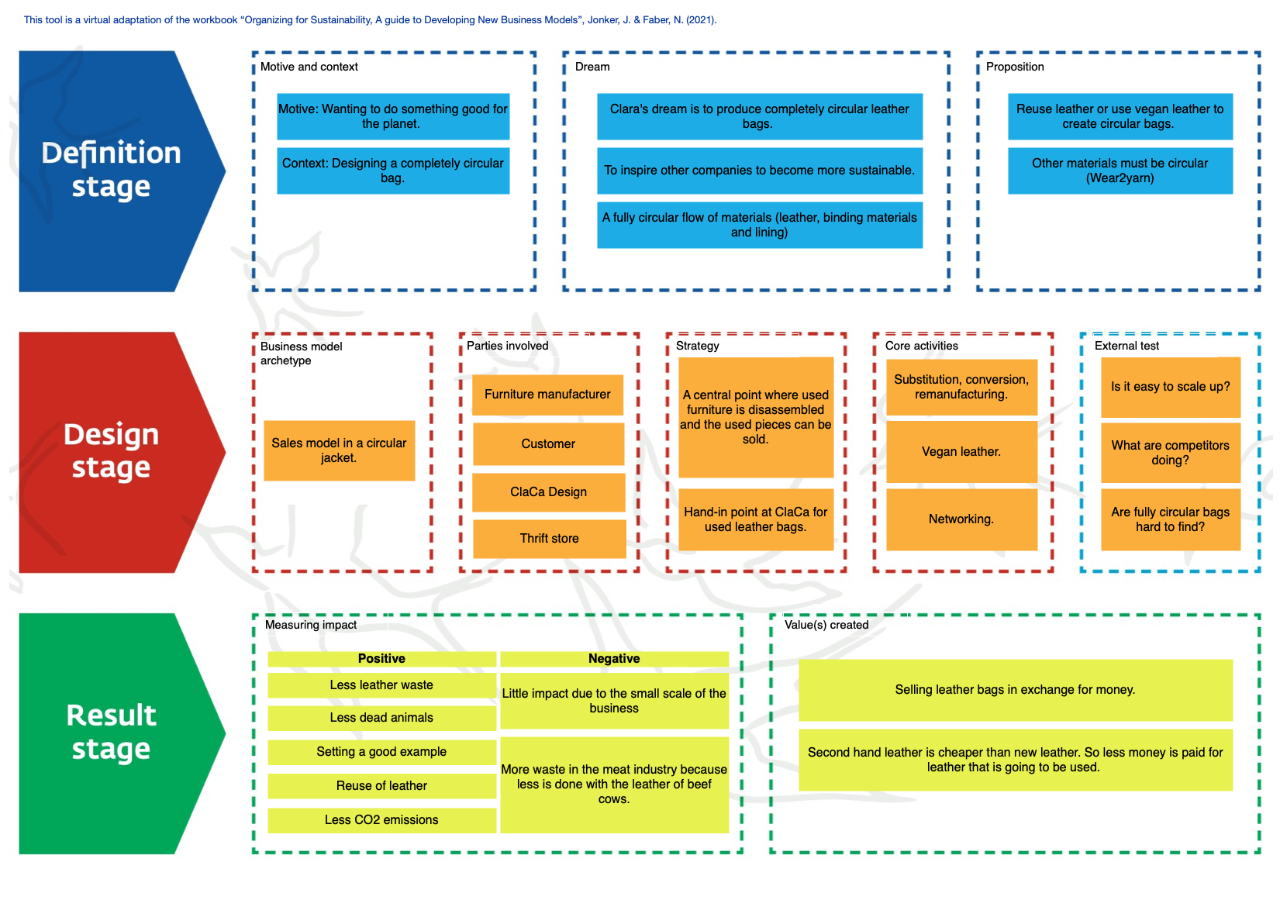Business Model Template

Tips for use
You can complete the Business Model Template by yourself, but it is often more effective if you do this with others, for example with colleagues, partners or experts in your domain. The template is designed to support an iterative process. You can take steps back at any time and go through certain phases again if you have come to new insights in the process.
Make a large print of the Business Model Template to use in a brainstorm. Use Post-its to write or sketch something in the template. This way you can easily add or move something if necessary.
Online tool
Take a look at the online version of the Business Model Template to work out your sustainable business model online. There you will also find more examples.
Using the tool
The Business Model Template is composed of three phases with a total of ten building blocks that together describe your sustainable business model, see below.
Definition phase
You start in the definition phase by working out what you are going to do.
Motive and Context: The ‘Motive and Context’ building block is all about problem formulation. What is going on, and in what context is this happening?
Dream: In the ‘Dream’ building block you describe the goal. What would you like to achieve or how do you want to make a difference?
Proposition: In ‘proposition’ you describe what value you want to offer or create, and for which target group.
Design phase
In the design phase you describe how you are going to realize the proposition and what is needed to do so.
Business Model Archetype: With ‘Business Model archetype’ you choose one of three types of sustainable business models: platform, circular or community business model.
Parties involved: ‘Parties involved’ is about the organizations, citizens or governments involved and the forms of cooperation. Make a stakeholder analysis to identify the parties that influence the business model (See the partner radar tool as well).
Strategy: With ‘Strategy’ you determine the best route to realize the proposition, given the environmental factors. Think of one of the six strategies: eco-efficiency, meritization, usage-optimization, lifetime extension, cascading or community building.
Core activities: In this building block, you determine which ‘core activities’ you will perform. These must be in line with the chosen strategy and dream and fit within the context.
External test: The ‘external test’ is intended to discuss your design with other people. For advice, to check the legislative framework or to investigate unforeseen impacts. After this phase you may need to adjust your design.
Results phase
In the result phase, you examine the impact of your business model and the transactions that go with it.
Measuring impact: ‘Impact’ is about the positive and negative consequences of your business model in a broad sense. In this building block you choose relevant indicators to make that impact transparent and you look at how you can make the indicators measurable in practice.
Value(s) created: ‘Value(s) created’ is about transactions or exchanges between parties. Here you determine which transaction forms are necessary or appropriate. You can start withfinancial transactions. But it is important to be open to other forms of transactions related to exchange of services, materials or knowledge as well.
Background
The Business Model Template is elaborated in the book 'Organizing for Sustainability, A guide to Developing New Business Models’ written by Jan Jonker and Niels Faber. The book can be downloaded for free at https://businessmodellab.nl/tools/bookorganizingforsustainability. This book is supported by a Massive Open Online Course (MOOC) for free as off September 2021 via https://businessmodellab.nl/en/tools/MOOC--Organizing-for-Sustainability.